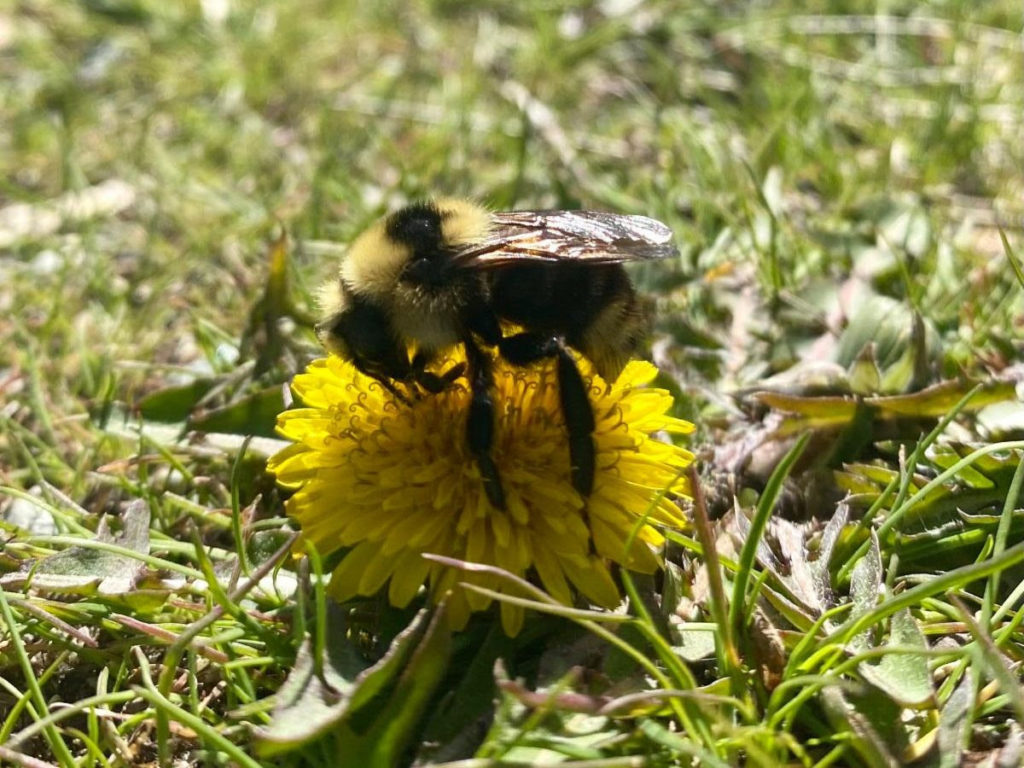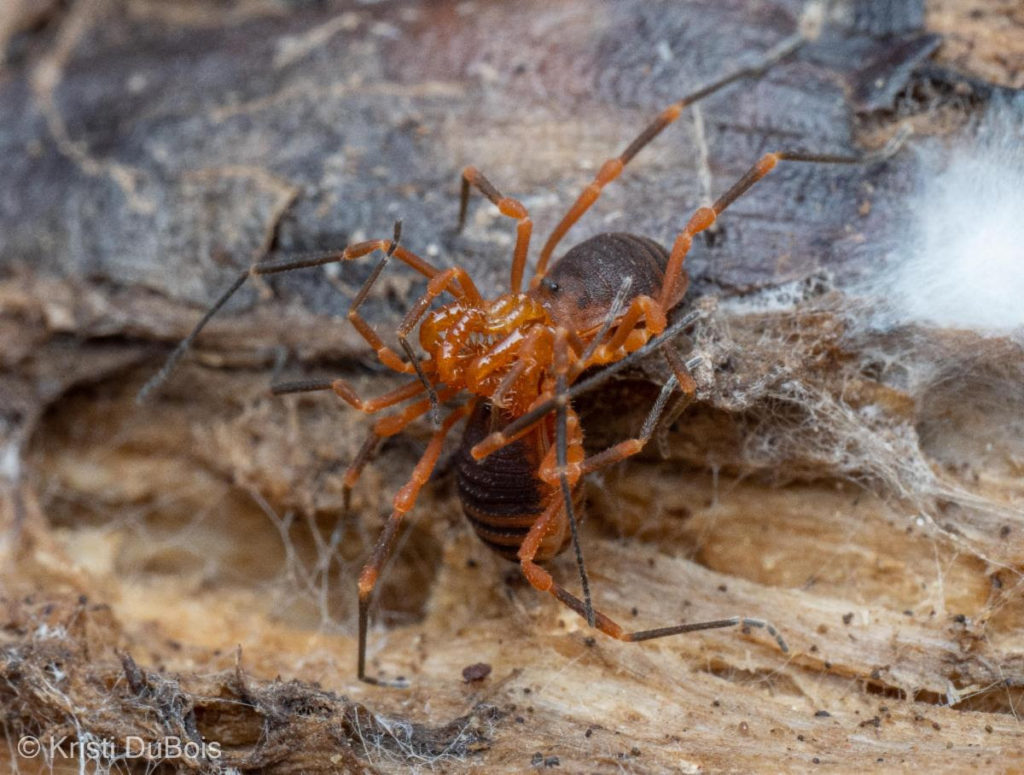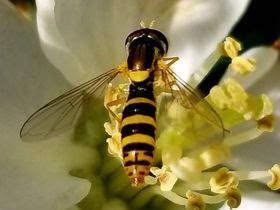With variable weather comes variable insect sightings. Spring in Montana means short windows to enjoy the sun, and fleeting glimpses at the insects that are starting to emerge. But who doesn’t love a good challenge? If insect activity seems light, try sitting near some blooming flowers, or getting up close and personal with the plants in your garden. It may not seem like it at first, but a moment of stillness may reveal a miniature world full of activity.

Calligrapha Beetle & Lace Bugs
Calligrapha sigmoidea & Corythucha salicata
It’s a two for one! This photo features a conspicuous calligrapha beetle, so named for the intricate calligraphy-like markings on the wing covers (or elytra). But look closely and you’ll notice two more bugs: two lace bugs perched on the upper left portion of the same leaf. Lace bugs are true bugs, and as such have piercing and sucking mouthparts. Some are predatory, but others, like the lace bugs here, feed on plant tissues.
Drew Lefebvre, May 7th, 2023. Fish Creek, MT.
Indiscriminate Cuckoo Bumble Bee
Bombus insularis
This bumblebee species is commonly encountered from May to August in Canada and forested areas of the western United States. Both females and males visit flowers for nectar, including flowers from the aster family like this dandelion. Female cuckoo bumble bees are “social parasites” of true bumblebees. They displace the resident queen in an established nest and trick the host workers into raising their offspring.
Brenna Shea, April 28th, 2023. Missoula, MT.


Armored Harvestman
Sclerobunus idahoensis
This is our second S. idahoensis sighting this year, and while we do our best to avoid repeats, this species of harvestman is so rare that two sightings within a couple weeks is too exciting to pass up. Harvestmen are non-venomous arachnids and often confused for spiders, but can be differentiated from the latter by their fused body segments. The two here may look like they are wrestling, but are actually in a mating embrace.
Kristi DuBois, April 29th, 2023. Missoula County, MT.
Ichneumonid wasp
Ichneumonidae
There are well over 3,300 species of Ichneumon wasps north of Mexico, making their identification difficult. Although the long appendage at the end of the abdomen looks threatening and reminiscent of a stinger, the Ichneumonid female uses it to lay her eggs. Most ichneumonid larvae are parasitic of moths and butterflies or sawfly larvae. Mothers lay their eggs on or in the insect host and the larvae develop and grow at the expense of it. Ultimately, the larvae kill the host.
Judy Halm, May 9th, 2023. Helena, MT.


June Bug
Phyllophaga sp.
These common beetles are named for the months they are most numerous in, May and June. The adults are nocturnal foliage feeders, while the larvae, known as white grubs, feed on roots of grasses and other herbs underground. They are clumsy walkers and fliers and attracted to lights …and well known for their noisy, awkward arrivals at porch lights and window screens on early summer nights. There are at least 400 species collectively distributed across North America except for Alaska and far northwestern Canada. The members of this genus vary in size, and vary in color from reddish brown to gray, but most cannot be identified to species.
Glenn Marangelo, April 29th, 2023. Missoula, MT.
Asher’s Blue
Celastrina asherii
The Asher’s blue is a relatively new species of butterfly, having been described just last year. Once considered a part of the many subspecies of azure butterflies (Celestrina), this blue is “moving up”. The Asher’s blue is found in western Montana and other areas in the northern Rockies west of the divide. In Montana they are frequently associated with riparian corridor habitats. As far as is known, caterpillars feed only on red osier dogwood (Cornus sericea) and possibly oceanspray (Holodiscus discolor).
Judy Halm, May 9th, 2023. Helena, MT.


Mottled Tortoise Beetle
Deloyala guttata
These flashy beetles can be found in fields, meadows, gardens, lawns and yards across eastern North America to the Rockies (Noza Scotia-Florida to Alberta-Texas) to Venezuela / West Indies. Both the larvae and adults feed on plants in the morning glory family (Convolvulaceae), creating irregular or semi-circular holes in leaves, inside the margins and between veins. They have been introduced as a biocontrol in British Columbia for Field Bindweed and Hedge False Bindweed, but “To date, establishment has not been confirmed.”
Lisa Ann Cloo, May 11th, 2023. Missoula, MT.
Globetail Hoverfly
Sphaerophoria sp.
Many hover flies do a great job at making you think you’re dealing with a wasp, hornet, or bee. Often seen hovering near or perched on flowers, the adults feed on pollen and nectar. Depending on the species, larvae feed on decaying plant or animal matter, other insects (aphids and leafhoppers) and play important roles in natural pest control. Hoverflies are also important pollinators for a variety of wild plants and agricultural crops around the world.
While different species may show a preference for specific flowers, they appear to prefer white and yellow colored flowers.
Lisa Ann Cloo, May 11th, 2023. Missoula, MT.
